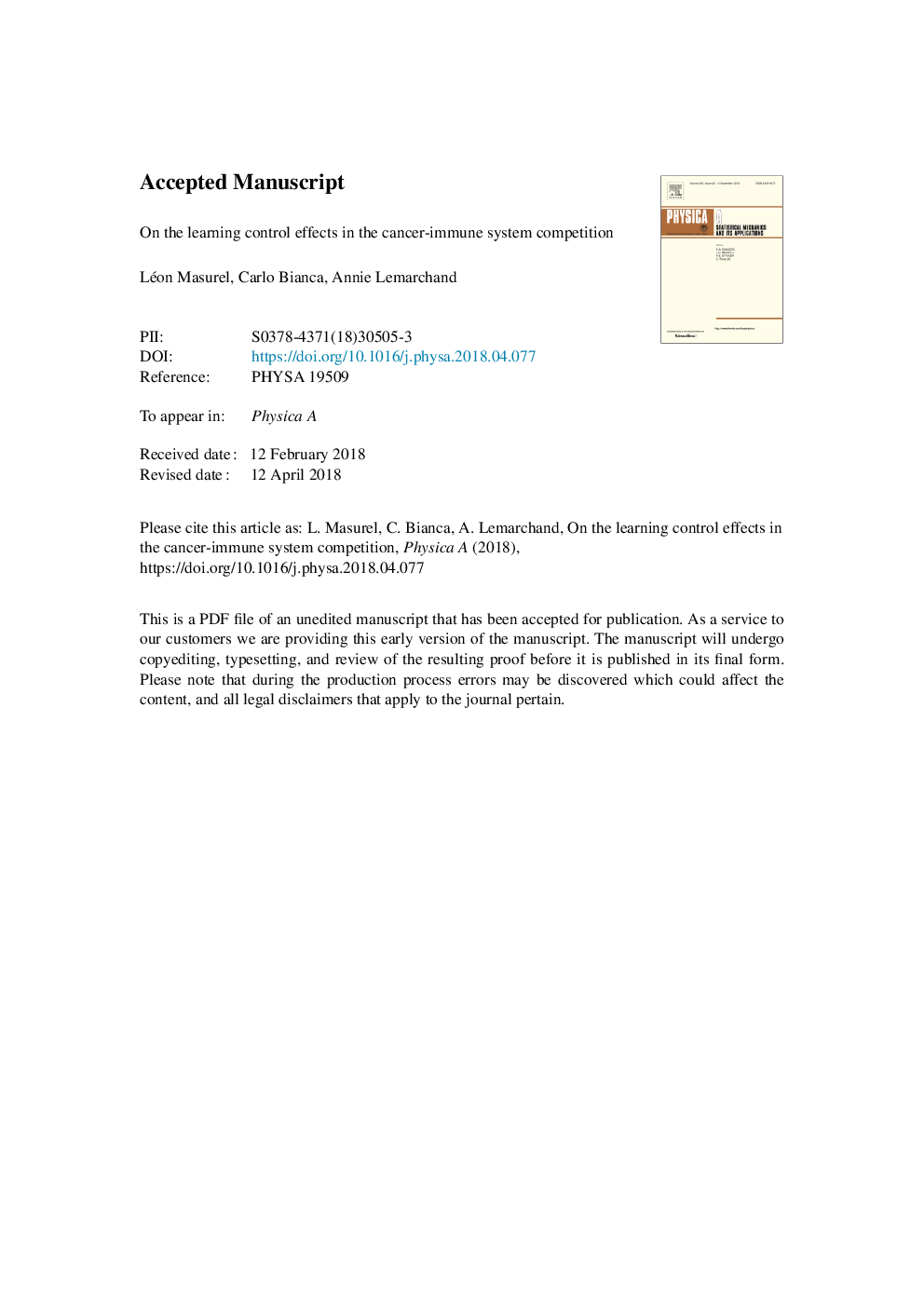| Article ID | Journal | Published Year | Pages | File Type |
|---|---|---|---|---|
| 7375062 | Physica A: Statistical Mechanics and its Applications | 2018 | 32 Pages |
Abstract
The interactions between a tumor and the immune system are modeled at cell scale in the framework of thermostatted kinetic theory. Cell activation and learning are reproduced by the increase of cell activity during interactions. The second moment of the activity of the whole system is controlled by a thermostat which reproduces the regulation of the learning process and memory loss through cell death. An algorithm inspired from the direct simulation Monte Carlo (DSMC) method is used to simulate stochastic trajectories for the numbers of cells and to study the sensitivity of the dynamics to various parameters. The nonintuitive role played by the thermostat is pointed out. For inefficient thermalization, the divergence of the number of cancer cells is obtained in spite of favored production of immune system cells. Conversely, when the activity fluctuations are controlled, the development of cancer is contained even for weakened immune defenses. These results may be correlated to unexpected clinical observations in the case of different cancers, such as carcinoma, lymphoma, and melanoma.
Related Topics
Physical Sciences and Engineering
Mathematics
Mathematical Physics
Authors
Léon Masurel, Carlo Bianca, Annie Lemarchand,
